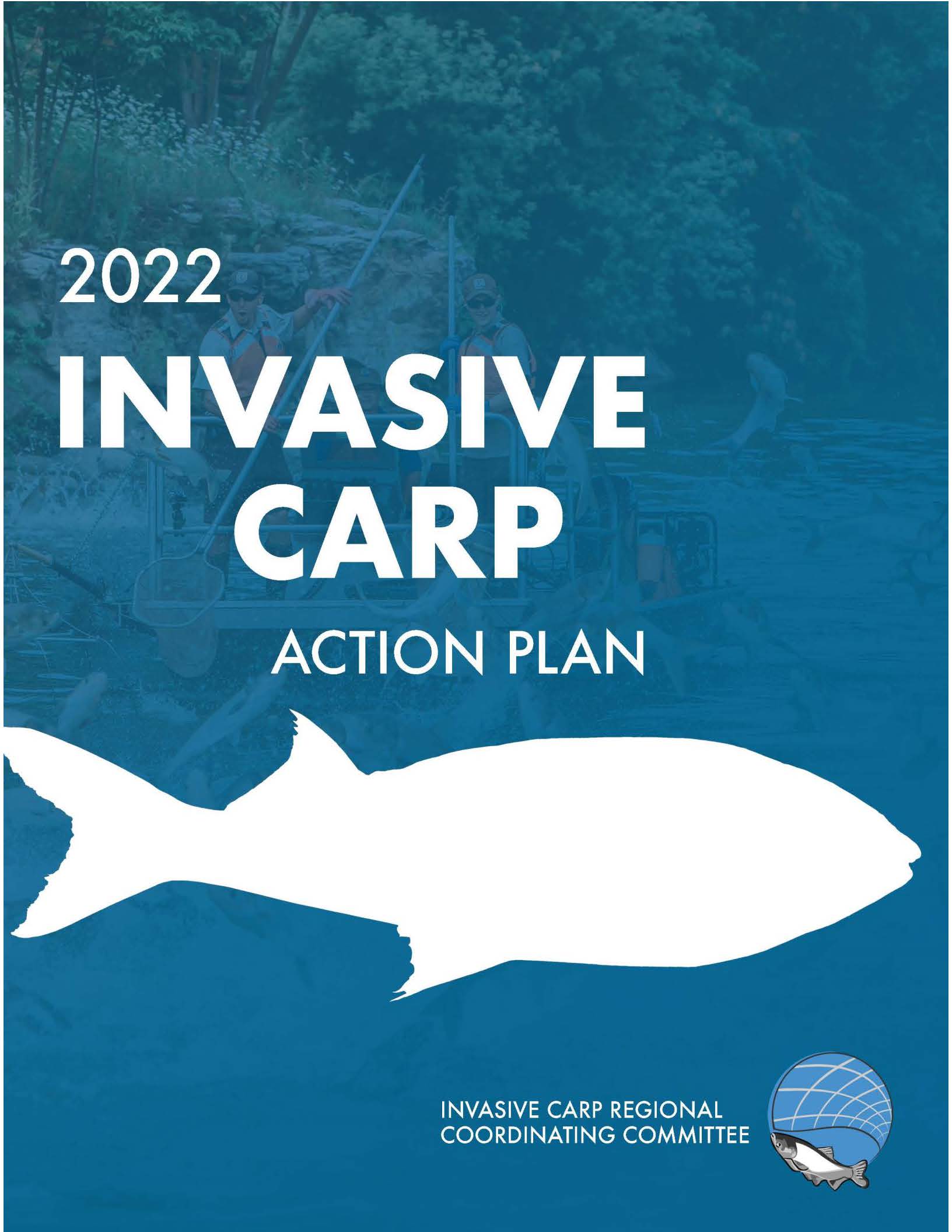Invasive Carp Regional Coordinating Committee Releases 2022 Invasive Carp Action Plan
March 31, 2022
Contact: Hannah Bergemann, Hannah_Bergemann@fws.gov
The Invasive Carp Regional Coordinating Committee (ICRCC) is pleased to announce the release of its 2022 Invasive Carp Action Plan (Action Plan), a comprehensive portfolio of 60 projects focused on Great Lakes protection. The Action Plan serves as a foundation for the work of the ICRCC partnership — a collaboration of 28 U.S. and Canadian federal, state, provincial, tribal, regional, and local agencies.
“Protecting the Great Lakes from invasive carp demands a whole of government approach,” said U.S. Environmental Protection Agency Region 5 Regional Administrator Debra Shore. “This cross-agency binational effort continues to identify ways to accomplish this critical goal.”
The 2022 Action Plan includes detection, prevention and control projects focused on key geographic areas of risk, as well as technology development, coordination support, and communication activities. These efforts include an aggressive reduction of invasive carp populations along established fronts, large-scale field trials of potential fish deterrent technologies and actions to address black and grass carp threats.
The 2022 Action Plan supports key initiatives including:
- The U.S. Army Corps of Engineers-led Brandon Road Lock and Dam Aquatic Nuisance Species Barrier Project in Will County, Illinois, in collaboration with the states of Illinois and Michigan. The Brandon Road project will incorporate a layered system of structural and non-structural control measures to prevent invasive carp from moving upstream into the Great Lakes.
- Continued operation of the electric dispersal barriers in the Chicago Area Waterway System.
- Large-scale field testing and development of new technologies to block invasive carp migration, including underwater sound, known as acoustics, and carbon dioxide deterrent barriers. The U.S. Geological Survey, U.S. Army Corps of Engineers and U.S. Fish and Wildlife Service are leading these efforts with assistance from partner agencies.
- Efforts by Illinois Department of Natural Resources to increase the use of focused commercial fishing to remove adult invasive carp in the upper Illinois River in support of population reduction goals and to reduce the risk of upstream expansion
- Continued efforts led by Ohio and Michigan Departments of Natural Resources, with the U.S. Fish and Wildlife Service, U.S. Geological Survey, Great Lakes Fishery Commission, and other partners, to remove grass carp in Lake Erie
- Continued support for state-led efforts in basin-wide early detection monitoring and contingency response actions.
The activities supported through the Action Plan incorporate the most current strategies and advances in science and technology for invasive carp prevention and control and, support the goals and recommendations of the national Management and Control Plan for Bighead, Black, Grass, and Silver Carps in the United States.
“Our collective efforts to prevent the introduction and spread of invasive carp are strengthened through collaboration and science-based management,” said U.S. Fish and Wildlife Service Great Lakes Regional Director Charlie Wooley. “The U.S. Fish and Wildlife Service remains committed to working alongside our partners to protect the Great Lakes.”
The 2022 Action Plan is funded through the Great Lakes Restoration Initiative, annual agency appropriations, and the Bipartisan Infrastructure Law. On January 19, 2022, Congress appropriated $226 million through the Bipartisan Infrastructure Law to the U.S. Army Corps of Engineers for the completion of Pre-Construction Engineering and Design and the initiation of construction for the Brandon Road Lock and Dam Aquatic Nuisance Species Barrier Project.
“The Brandon Road Interbasin Project is the most important effort in the region focused on protecting the Great Lakes Ecosystem, a globally important natural resource, from the negative impacts of invasive species. The project offers a unique combination of protection strategies as the nation’s best defense while still maintaining the economically important commercial navigation and recreation traffic through the Illinois Waterway,” said Col. Jesse Curry, U.S. Army Corps of Engineers, Rock Island District, Commander. “USACE and its partnership with the states of Illinois and Michigan remains committed to expediently delivering this one-of-a-kind project to prevent the spread of aquatic invasive species and protect our natural resources from harm.”
For more information on the Invasive Carp Regional Coordinating Committee and to access the 2022 Invasive Carp Action Plan, please visit www.invasivecarp.us.
The ICRCC is a bi-national partnership of 28 U.S. and Canadian federal, state, provincial, tribal and local agencies and organizations with the mission of preventing the introduction and establishment of invasive carp in the Great Lakes.

